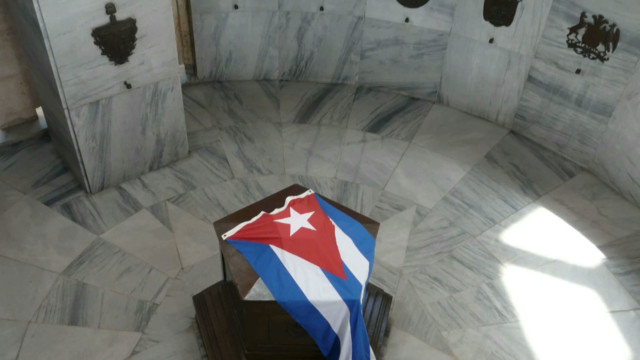The ashes of Fidel Castro are making their way across Cuba. The 800-kilometer procession will end in the city of Santiago. Thousands of Cubans have gathered along the route.
CCTV’s Michael Voss has more.

Santiago is the island’s bustling second city , the center of many key moments in Fidel Castro’s life. Now it will be his final resting place.
Santiago is flanked by the Sierra Maestra mountains, the base for Fidel Castro’s band of guerrilla fighters, who went on to overthrow the U.S. backed dictator Fulgencio Batista.
When Batista finally fled the country on New Year’s Day 1959, a triumphant Fidel Castro came down from the mountains and gave his first victory speech from this balcony above what was then Santiago’s city hall.
From there, he took his rebel army on a victory caravan, slowly making its way through every town on the 900 kilometer journey to the capital Havana.
Now Fidel Castro’s ashes are taking the exact reverse journey as his funeral caravan heads back to Santiago.
A primary school in Santiago, housed in what was the Moncada Army Barracks, is where on July 26th 1953 Castro launched an ill-fated attempt to seize the barracks. It failed and almost everyone was killed or captured. But it marked the start of Fidel’s revolutionary career as head of M26, the July 26th movement.
Today, many in Santiago are wearing M-26 armbands.
Fidel Castro will be laid to rest Sunday morning at Santa Ifigenia, the most historic cemetery in Cuba. It houses the mausoleum of Jose Marti, Cuba’s most revered leader of the independence wars against Spain.
Fidel Castro saw his revolution as a continuation of Marti’s struggle for an independent Cuba. A legacy they both share.
 CGTN America
CGTN America

